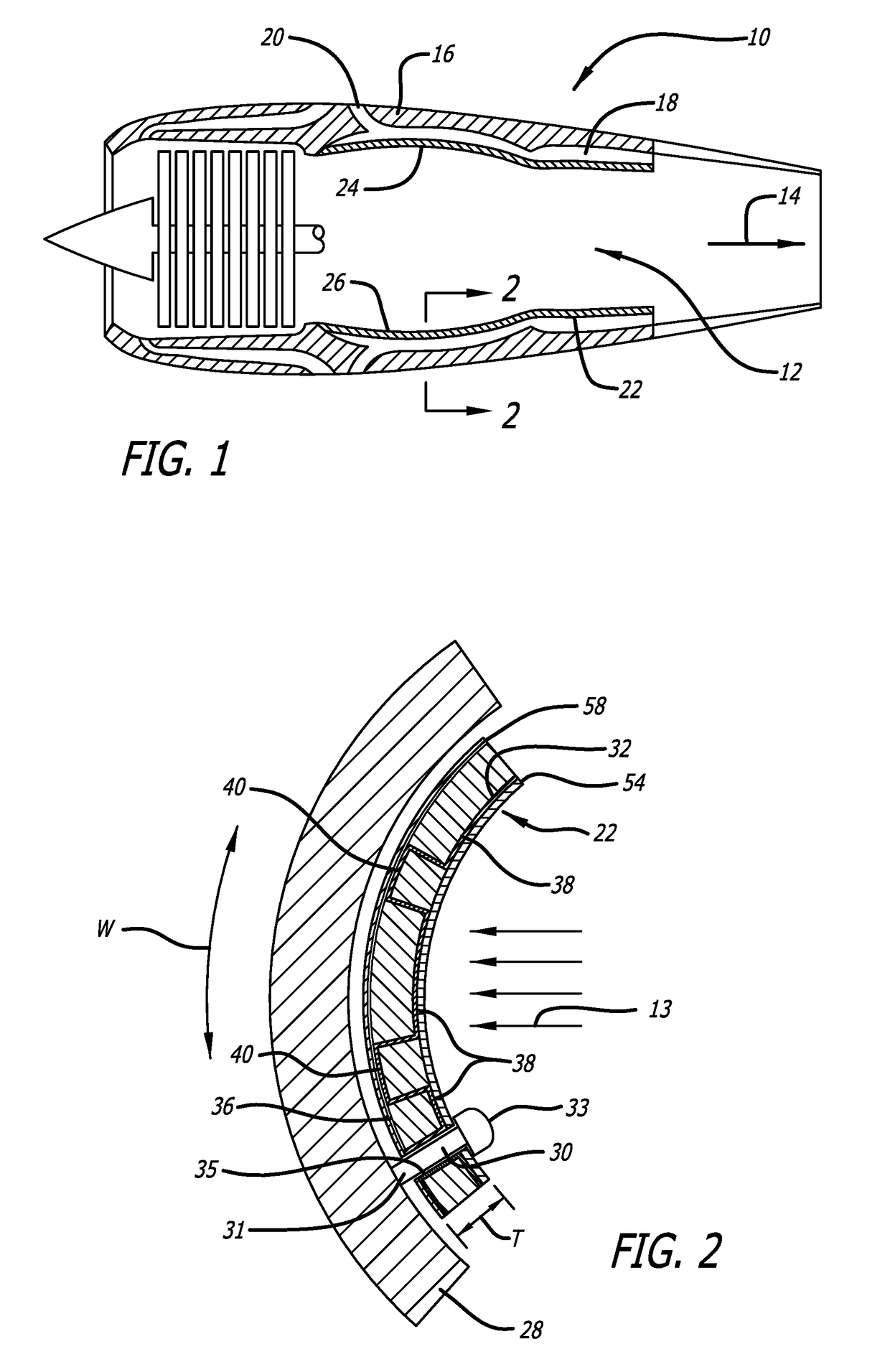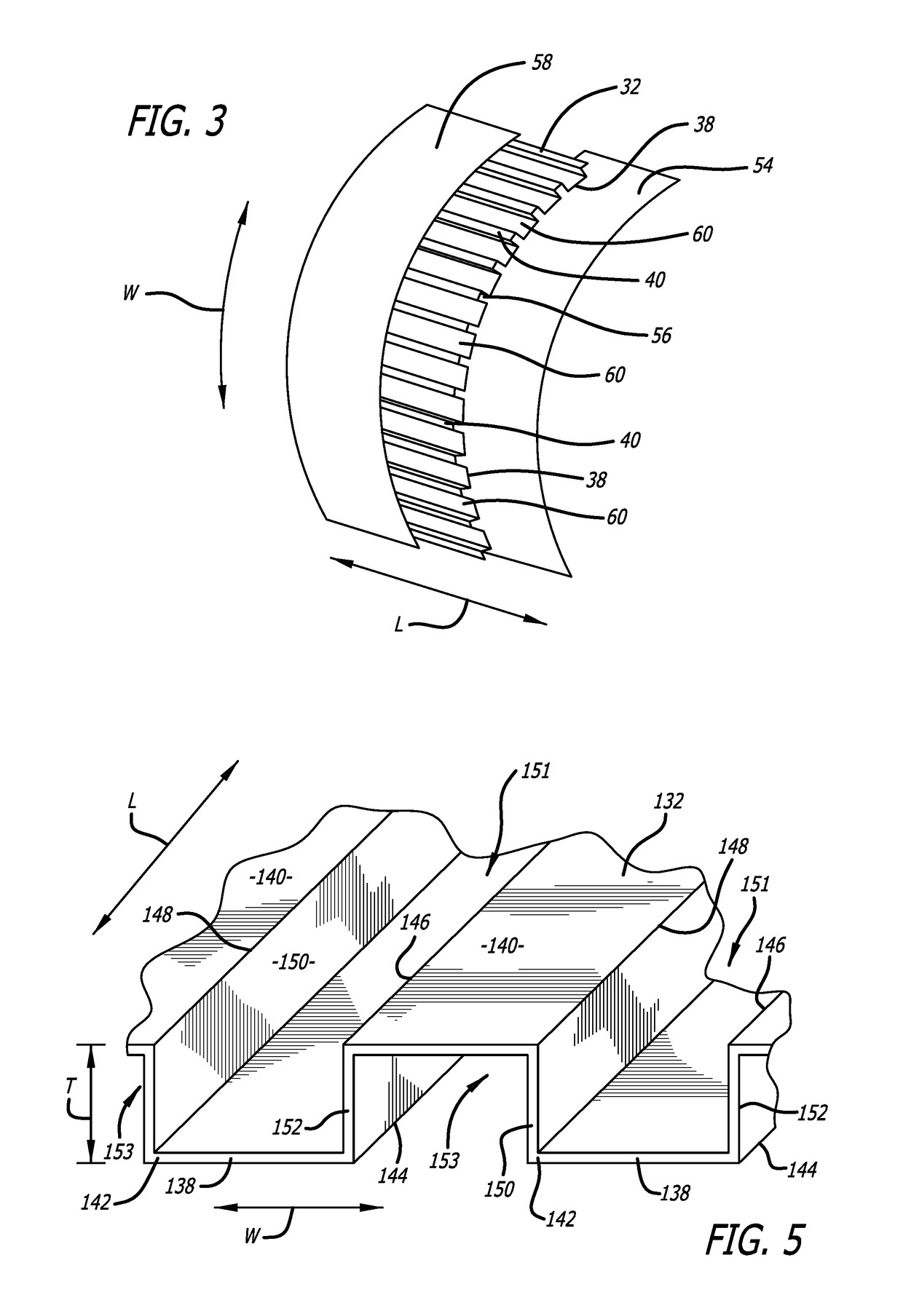Thermal panel
a technology panels, applied in the field of thermal insulation systems, can solve the problems of affecting the performance and affecting the quality of acoustic honeycomb panels
- Summary
- Abstract
- Description
- Claims
- Application Information
AI Technical Summary
Benefits of technology
Problems solved by technology
Method used
Image
Examples
Embodiment Construction
[0021]The thermal panels of the present invention may be used for insulating a wide variety of heat sensitive structures from a wide variety of heat sources. The thermal panels are well-suited for use in protecting the heat sensitive portions of a jet engine from the heat generated in the combustion (hot) section of the engine. Accordingly, the thermal panels are intended to be used where the heat source has a temperature of from 500° F. to 1000° F. with temperatures of between 600° F. to 750° F. being typical for current jet engines. The thermal protection provided by the thermal panel should be such that the structure or body being thermally protected is exposed to temperatures on the order of 350° F. to 500° F.
[0022]The following detailed description is limited to exemplary embodiments of thermal panels that are located within a jet engine. The thermal panels are intended to be used as a replacement for the thermal blankets that are presently commonly used in jet engines to therm...
PUM
| Property | Measurement | Unit |
|---|---|---|
| Temperature | aaaaa | aaaaa |
| Temperature | aaaaa | aaaaa |
| Width | aaaaa | aaaaa |
Abstract
Description
Claims
Application Information
 Login to View More
Login to View More - R&D
- Intellectual Property
- Life Sciences
- Materials
- Tech Scout
- Unparalleled Data Quality
- Higher Quality Content
- 60% Fewer Hallucinations
Browse by: Latest US Patents, China's latest patents, Technical Efficacy Thesaurus, Application Domain, Technology Topic, Popular Technical Reports.
© 2025 PatSnap. All rights reserved.Legal|Privacy policy|Modern Slavery Act Transparency Statement|Sitemap|About US| Contact US: help@patsnap.com



